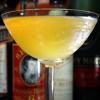-
Welcome to the eG Forums, a service of the eGullet Society for Culinary Arts & Letters. The Society is a 501(c)3 not-for-profit organization dedicated to the advancement of the culinary arts. These advertising-free forums are provided free of charge through donations from Society members. Anyone may read the forums, but to post you must create a free account.
Liquor in pie crust
-
Similar Content
-
- 1 reply
- 241 views
-
- 12 replies
- 5,798 views
-
- 514 replies
- 120,130 views
-
- 2 replies
- 1,152 views
-
Liquor Shortages 1 2 3
By btbyrd,
- 51 replies
- 11,174 views
-
-
Recently Browsing 0 members
- No registered users viewing this page.







Recommended Posts